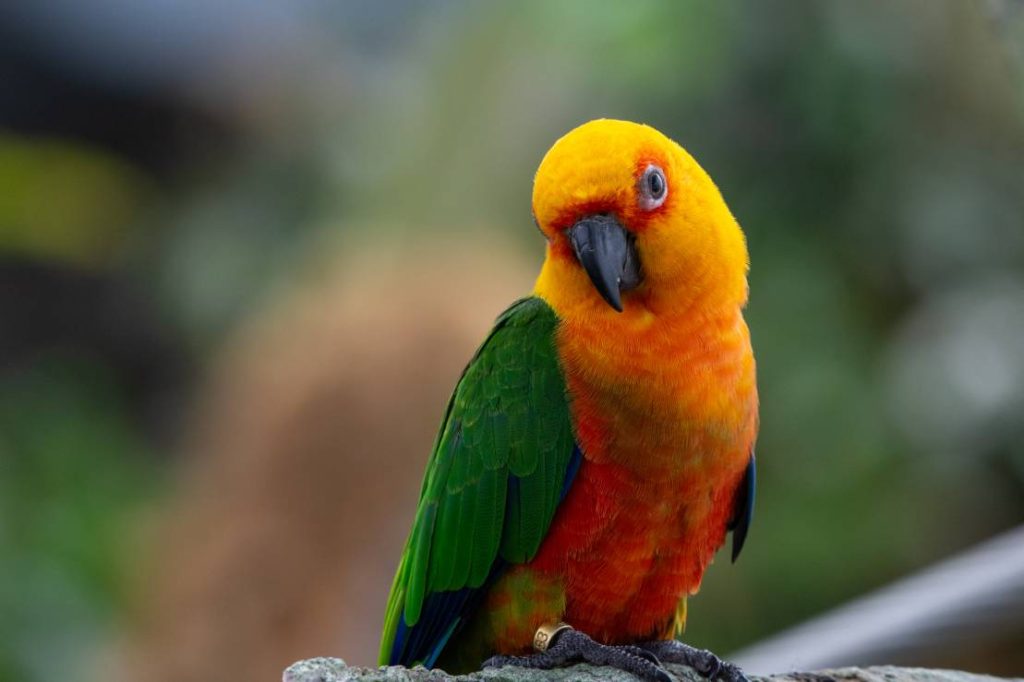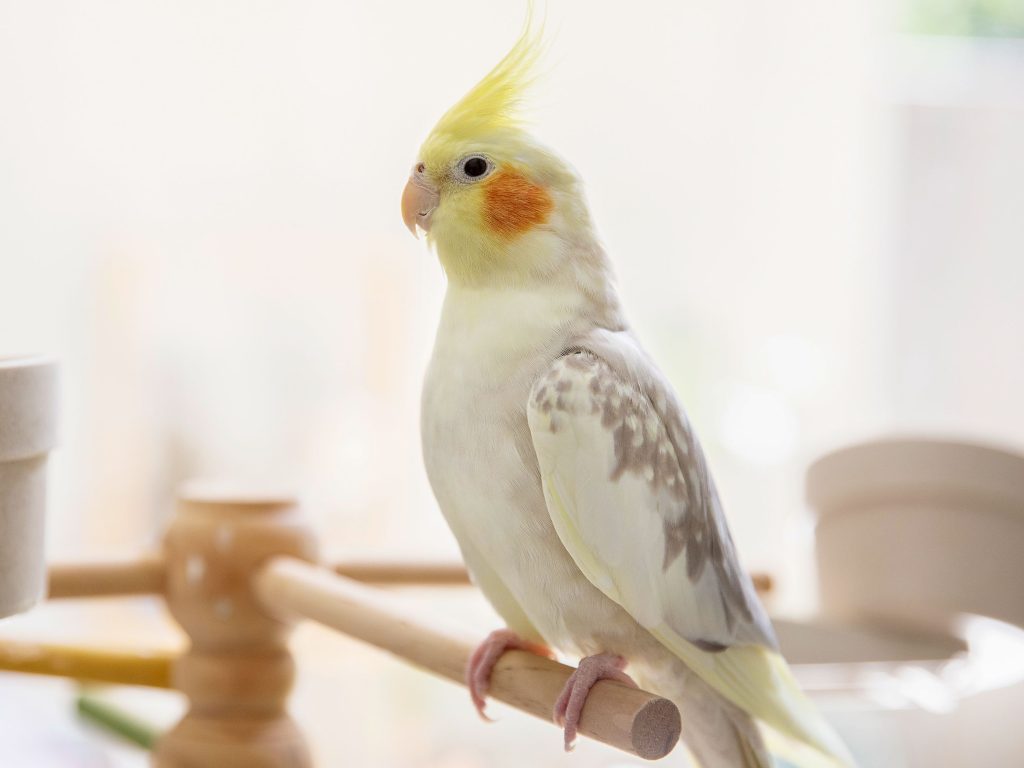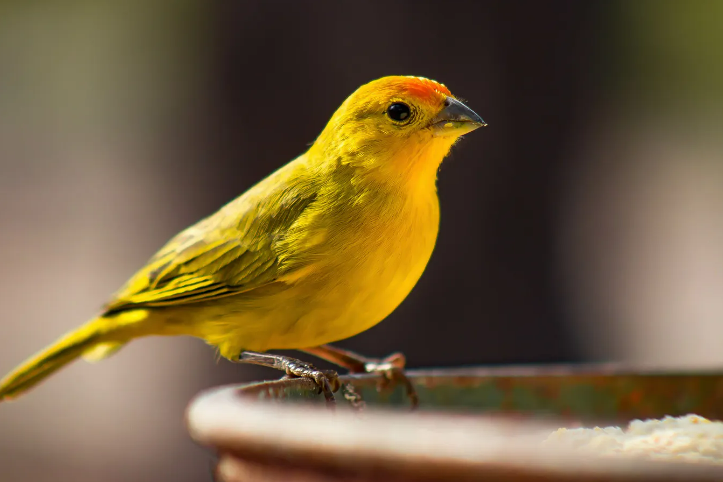When it comes to birds, there are a variety of kinds that can make excellent pets. The nicest aspect is that they are all unique in their own way.
They also require less care and maintenance than other pets, such as dogs or cats, and are more autonomous, requiring less interaction with you. If you do decide to adopt one of these feathered friends, you will appreciate the companionship they bring for years to come.
The top 5 bird species for newbies looking for a pet are listed below:
1- Conures:

Conures are a general word for a variety of tiny parrot species found in South and Central America. The name “conure” comes from the Portuguese word “conuro,” which means “parrot.” Conures come in a variety of colors and shapes, including the Green-cheeked Conure, Lilac-crowned Parakeet, Jenday Conure, Sunburst Conure, and Nanday Parakeet, to mention a few.
Because of their ability to communicate and their high energy level, these birds make excellent pets. They can also live for up to 30 years, so you’ll have plenty of time to get to know them. The only disadvantage is that because conures are larger (averaging 15 inches in length), they require a spacious cage or aviary where they may fly around freely.
- Feeding:
Hard-shelled fruits, fresh vegetables, and pellets are required for conures’ diet. They’re also untidy, so plan to spend some time cleaning their cage or aviary; but, if you don’t mind, this is the bird for you. Fresh water should always be available in their cage or aviary so they can drink freely. - Training:
It’s also really simple to train your conure. Just make sure its cage or aviary is in a calm, distraction-free area so it can concentrate. They are intelligent enough to pick up tricks from simple training equipment like clickers. Some conures can be trained to imitate human speech, dance (with the help of dancing toys), and much more!
2- Cockatiels:

Cockatiels have a crest that distinguishes them from other birds. They are originally from Australia’s mainland, but their popularity has taken them all over the world.
Cockatiels make entertaining pets due to their high energy levels. Because they enjoy connecting with people, you may quickly teach them tricks like chatting, singing, and whistling. They’re also simple to feed because they only need to drink water and consume seeds and vegetables. Because these birds prefer to chew on objects, maintain their cage clean at all times and replace their toys on a regular basis.
Consider acquiring a bird stand or an extra cage and keeping it in a room of your house to assist your new pet settle in faster. Place his cage near your TV or computer so he can see you and get used to your face, voice, and smell during the day.
- Feeding:
Cockatiels should be given pellets as well as fresh vegetables and fruits such as apples, oranges, grapes, berries, melon, and carrots to help them grow strong. Millet spray can also be used as a reward, but be careful not to overdo it because millet sprays are heavy in calcium and might cause kidney problems in cockatiels.
- Training:
Cockatiels enjoy associating with humans, so after some work, you can easily teach them things like chatting or whistling. If you want him to do more difficult feats, though, you should invest in a training instrument like clickers or whistles.
3- Canaries:

Canaries are a popular beginner’s pet since they are relatively straightforward to care for. They eat largely fruits and vegetables rather than pellets and require less care because all you have to do is clean their cage on a regular basis.
Canaries rarely live longer than ten years, which is insignificant when compared to giant parrots, which can live up to 100 years! This is a far more manageable commitment, but it also means a faster heartbreak.
These birds are also very sociable creatures, so if you want them to be happy, obtain a companion because they require company the majority of the time. Canary birds, like their parrot counterparts, have a lovely singing voice despite their small size. There is, however, a way to get your canary to sing: Place him on a swing, and he’ll usually start swinging!
- Feeding:
Because canaries enjoy fruits and vegetables, you can feed them seeds as well as fresh fruit and vegetable treats. Make sure you eat a well-balanced diet with plenty of vitamins and minerals, as well as all of their nutrients. - Training:
Canaries, like most pet birds, are intelligent enough to pick up basic tasks like singing or whistling with a little practice. Consider purchasing training items such as clickers or whistle devices if you desire more sophisticated skills or melodies.
4- Budgies:

Budgerigars, often known as Budgies, are little pet birds that are incredibly easy to care for. They are reasonably priced and come in a variety of colors, allowing you to select the right match for your home.
If you put a mirror in their cage, they’ll assume there’s another budgie in there, and they’ll be more playful. Because these birds, like other parrots, enjoy interacting with humans, you can easily teach them techniques like talking if you’re interested (which isn’t necessary but nonetheless enjoyable).
Because they enjoy chewing on objects, you should provide plenty of toys for your new friend. Cleaning the cage will be necessary on a regular basis to remove debris that could injure your pet.
- Feeding:
Budgies need a diversified and well-balanced diet of pellets, mixed seeds, leafy greens, and vegetables. If you’re concerned that he’ll become bored in his cage, add some enrichment items to his cage, such as wooden puzzle toys that force him to work for his food! - Training:
Although teaching a budgie is not as difficult as training some larger species, they are nonetheless quite intelligent. They are quick to learn their names and like interacting with people. If you want to teach your budgie tricks or songs (as the canaries do), get him a whistle device or a clicker to help him learn them quickly. You may also let him observe you doing tricks so he can imitate you.
5- Lovebirds:

Lovebirds, as their name suggests, are highly playful and gregarious, so keeping them in pairs is a good idea. They’re not as noisy or messy as other parrots, making them an excellent choice for apartment dwellers; they also require fewer toys than larger birds, making clean-up less of a problem.
They’re also really cool looking, with their bright colors and little stature, so seeing them flying around freely in the open is quite a sight. Consider purchasing yourself a fascinating lovebird toy if you’re searching for something to keep you occupied at work; they can even be trained to perform tricks!
- Feeding:
Seed blocks, pellets, millet spray, vegetables, leafy greens (like as parsley), and loads of fruit delights like berries and melons make up a lovebird’s diet. Most lovebirds eat nearly everything you give them (as long as it’s nutritious), so you don’t have to worry about their nutrition.
The only thing you have to worry about is them getting overly fat, which is difficult to avoid because they’re naturally tiny. As long as the bird maintains a healthy weight, you can let it free-feed. If you detect some excess fluff, take away the food bowl for a day or two and he will drop weight.
- Training:
Because lovebirds are notorious for their obstinacy, training them is more difficult than training other little birds, but not impossible. If you want to give it a shot, you should first get to know them. Then, once you’re at home, gradually begin picking them up and interacting with them (this will make them more comfortable with your touch). Allow him out out of his cage for a few minutes after being handled numerous times, and he’ll soon be following you around the home. The rest is entirely dependent on how much time and effort you devote to it!
They shouldn’t bite as often as long as they have sufficient human interaction. If, on the other hand, your lovebird begins to bite excessively, there is a problem in its habitat.
Conclusion:
If you decide to have a bird as a pet, make sure you do your research on them and their requirements so that when the time comes for you to obtain one, everything goes smoothly. Pet birds are incredibly social animals, and you will need to spend time with them, so plan accordingly.
The purpose of having an animal in your home is not simply to have something to look at, but also to have a companion that will keep you company and be there for you when the going gets tough. As a result, choosing a pet bird necessitates considerable thought and planning; if you need assistance, browse our articles on the bird species of your choice, or contact us!






